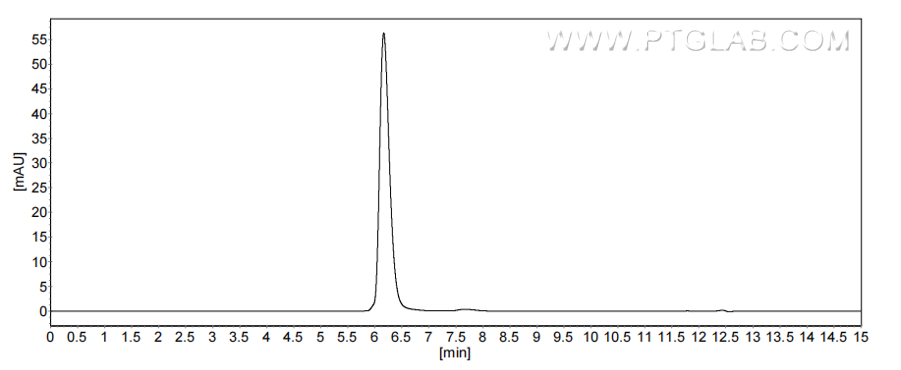Recombinant Human CD55 protein (rFc Tag)(HPLC verified)
种属
Human
纯度
>90 %, SDS-PAGE
>90%, SEC-HPLC
标签
rFc Tag
生物活性
未测试
验证数据展示
产品信息
| 纯度 | >90 %, SDS-PAGE >90%, SEC-HPLC |
| 内毒素 | <0.1 EU/μg protein, LAL method |
| 生物活性 |
Not tested |
| 来源 | HEK293-derived Human CD55 protein Asp35-Ser353 (Accession# P08174) with a rabbit IgG Fc tag at the C-terminus. |
| 基因ID | 1604 |
| 蛋白编号 | P08174 |
| 预测分子量 | 61.2 kDa |
| SDS-PAGE | 65-80 kDa, reducing (R) conditions |
| 组分 | Lyophilized from 0.22 μm filtered solution in PBS, pH 7.4. Normally 5% trehalose and 5% mannitol are added as protectants before lyophilization. |
| 复溶 | Briefly centrifuge the tube before opening. Reconstitute at 0.1-0.5 mg/mL in sterile water. |
| 储存条件 |
It is recommended that the protein be aliquoted for optimal storage. Avoid repeated freeze-thaw cycles.
|
| 运输条件 | The product is shipped at ambient temperature. Upon receipt, store it immediately at the recommended temperature. |
背景信息
CD55, also known as decay-accelerating factor (DAF), is a membrane lipid microstructural domain-associated GPI-anchored protein with a molecular weight ranging from 50 to 100 kDa depending on the cell type. CD55 protects cells from complement-mediated attack by accelerating the decay of C3 and C5, and its absence has been linked to a number of pathologies resulting from over-activation of the complement system. CD55 can signal within cells to promote malignant transformation, cell survival and inhibit apoptosis. CD55 can signal intracellularly to promote malignant transformation, cancer progression, cell survival, angiogenesis, and inhibition of apoptosis. CD55 is enriched in cancer stem cell (CSC) ecosystems in a variety of tumors including breast, ovarian, and cervical cancers and can be induced by chemotherapy and hypoxic environments. (PMID: 36216147)
参考文献:
1. Bharti R,et al. Cancer Lett. 2022;551:215935. 2. González-Del-Barrio L, et al. FASEB J. 2023;37(11):e23256. 3. Kurolap A, et al. Hum Genet. 2023;142(5):683-690.

